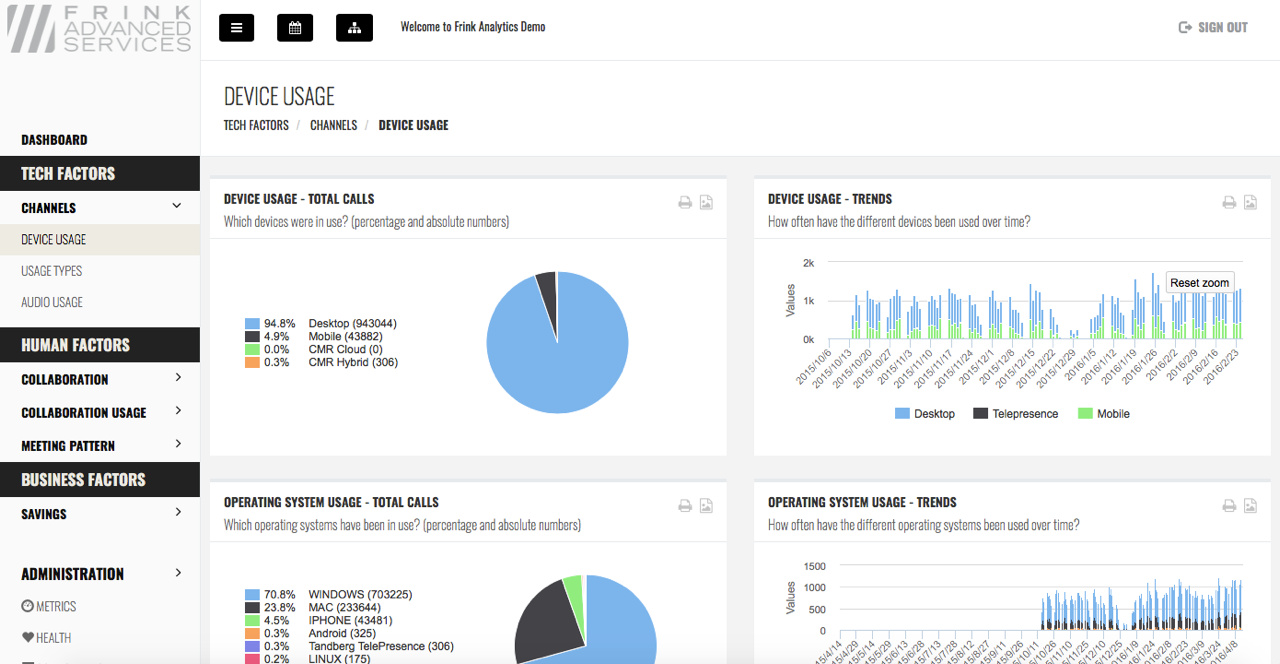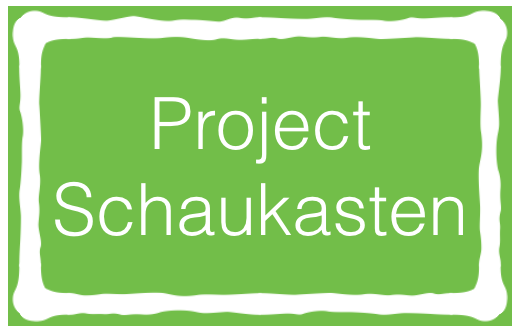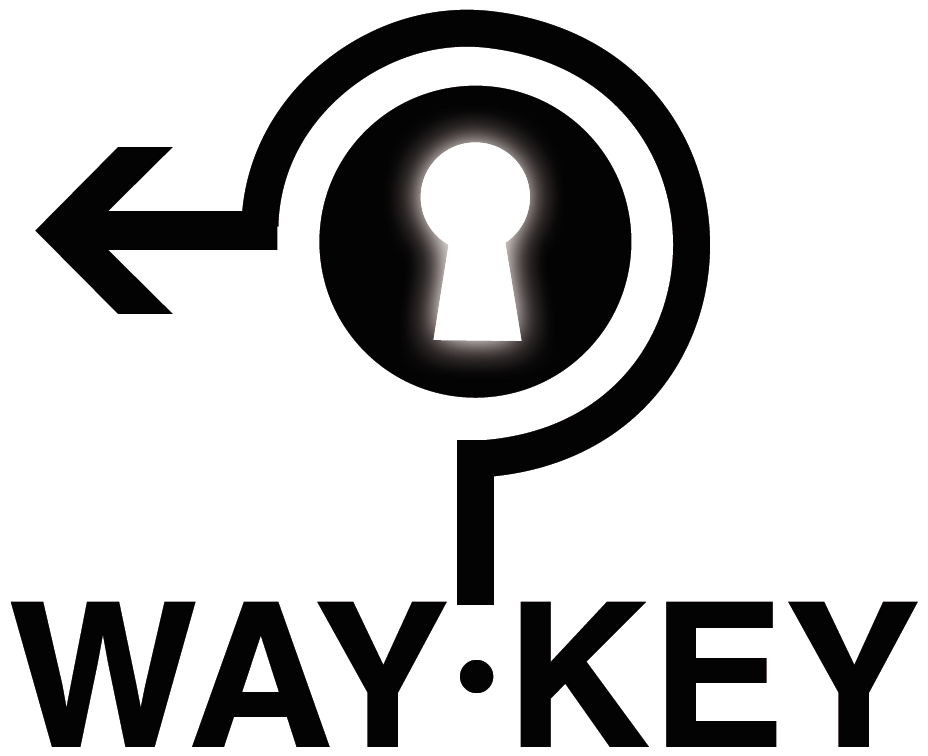Below you will find pages that utilize the taxonomy term “Human-Centered Design”
CoSi4U - Human Factors in Using Collaboration Systems in Companies

The CoSi4U (Human Factors in Using Collaboration Systems in Companies) project is a cooperation project with FRINK Advanced Services GmbH. FRINK Advanced Services GmbH developed a tool for analysing collaboration data in companies. The goal of the project is to support the company in finding a user-friendly design in order to help analysts to handle this data and to make relationships between them visible.
Team: Simone Kriglstein (contact person) and Nikolaus Suchy
CVAST - Centre of Visual Analytics Science and Technology

The Centre of Visual Analytics Science and Technology (CVAST) is one of the Laura Bassi Centres of Excellence. The goals of CVAST are twofold. The first goal is the integration of the outstanding capabilities of humans in terms of visual information exploration with the enormous processing power of computers to form a powerful knowledge discovery environment. The second goal is to scientifically assess the usability and utility of such discovery environments while bridging the gap between theory and practice for selected application scenarios. To achieve these goals we cooperate with several partners from industry.
Designing for resilience with unaccompanied migrant youth
Unaccompanied migrant youth (UMY) must cope with adversities before, during, and after their flight to Austria without adult relatives. Mental health support could contribute to promoting resilience in UMY and help them to cope with their adverse situation; however, despite increasing evidence that technology could make mental health support more accessible, there is a lack of knowledge regarding how to design technology-enabled resilience support for this vulnerable and marginalized population. This project explores how to potentially support resilience promotion in UMY with the help of technology. I use qualitative and design methods to (1) gain a deep understanding of the context of UMY in Vienna, Austria; (2) identify pathways to integrate technology-enabled resilience support; and (3) explore possibilities to design technology-enabled support for this space. The findings highlight a complex interplay among social-ecological factors in supporting and hindering resilience promotion that cannot be ignored when designing technology-enabled resilience support for this context. Otherwise, the technological solutions could not be as supportive as possible and even fail to provide support. Thus, the outcome of this project proposes and exemplifies a shift from an individual to a social-ecological approach to researching and designing technology-enabled resilience support. The first outcome of this project is a descriptive account mapping the social-ecological factors such as macro-systemic factors (e.g., legal policies) and micro-systemic factors (e.g., social and physical factors in the everyday living situation) that support and hinder resilience. The second outcome of this project is a map of potential pathways and possibilities for technology-enabled resilience support in this context, which is presented as part of a design framework. This design framework focuses on two main pathways to integrate technology-enabled support for UMY in this context: through direct technology-enabled support for UMY and by supporting resilience in UMY through their mentors. The thrid contribution of this project is an understanding of how to apply the design framework to the research and design of technology-enabled support for this and other contexts, such as low- and middle-income countries. The framework could help researchers to develop technological solutions that are capable of integration into the social-ecological interplay and relations. The design examples resulting from this project instantiate some possibilities of technology-enabled resilience support for UMY and could be further developed and evaluated in future studies.
Developing an inclusive technological toolkit to support prevention approaches
Within this project, a technological toolkit is being developed, which will allow young people, mediated by caregivers, to create customizable applications to support their own mental health and wellbeing, based on evidence-based interventions.
The necessity for this project emerges out of two intertwined problems. First, the homogenous nature of existing approaches to promote youth mental health (YMH), as they are often text-based, even as they are progressively being translated into the digital sphere. Yet the group “adolescents”, which is, within this project, defined as youth roughly between the age of 14 and 25, can’t be considered homogenous by any sensible metric. An intervention which is highly engaging for one might be of no interest, or not even accessible, for another (Castro, Barrera, & Martinez, 2004). For example, the existing emphasis on text-based measures to promote mental health does exclude migrant youth who do not yet have access to the language in which those measures are presented. While an increasingly broad landscape of more heterogeneous YMH interventions is currently opening up, those interventions are usually not customizable, which results in the same exclusion effects, and in resting the burden of identifying a suitable intervention on the ability and willingness of adolescents to comb through all available options, until they find one that works for them. On top of that, for YMH interventions to be used in the first place, they have to be engaging, which Hagen, Collin, Metcalf, Rahilly, & Swainston (2012) point out as one of the key challenges when developing technological YMH interventions. Second, the aforementioned lack of available customization presents a lost opportunity to address hedonic adaptation (Kahneman, Diener, & Schwarz, 1999). Engagement decreases over time, as applications lose their novelty. This loss of engagement does not, however, coincide necessarily with decrease in usefulness or effectiveness. People may lose interest over time, even if continued use of an application would still be beneficial. Allowing for customization, for changing features of an application, allowing adding and removing of features, should decrease the effects of hedonic adaption, or at least delay them, and thus extend the period of active use of an application, which in turn likely increases the overall effect an YMH application can have on its user.
PAIR – Pairwise Visual Comparison of Directed Acyclic Graphs: A HCI Perspective
The goal of this project is to improve visualizations for pairwise network comparisons via new cognition-driven design guidelines. This project will specifically concentrate on the visual comparison of directed acyclic graphs in node-link diagrams. Such comparison is needed, for example, in the analysis of phylogenetic trees in biology or in the assessment of contagion in financial networks. In these cases, the domain experts concentrate on finding commonalities and differences between the two networks being compared. This analysis is often undertaken in a visualized form. Visual exploration enables to identify where the differences are located and thereby to extract insights from these differences. Effective visual network comparison requires a well-designed visualization. Effective visualization uses guidelines, which are inter alia derived from research in cognitive psychology and human-computer interaction (HCI). Until now, HCI research has mainly focused on deriving guidelines for the visualization of single networks. There are still many open research questions concerning the comparison of two or more networks in node-link diagrams
SCHAUKASTEN - Sehförderung für Kleinkinder

SCHAUKASTEN - Sehförderung für Kleinkinder (1.12.2016 - 31.1.2018), financed by: Hauptverband der österreichischen Sozialversicherungsträger
SCHAUKASTEN seeks to conceptualize, co-design and implement novel interactive toys that motivate young children with visual impairments to keep up with their often dull but crucially important optical exerices.
Children with distinct visual impairment shall exercise their vision as soon as possible in order not to go blind. This exercise in vision constitutes an important building block for later leading an autonomous life.
SEL4Home - Supporting children’s social-emotional learning at home

A principal challenge for existing social-emotional learning (SEL) programs is to provide reinforcement of the learnt competencies in everyday contexts and beyond the in-school lessons. SEL4Home project starts to bridge this gap by exploring how novel technologies can extend the programming into the homes of learners.
We collaborate with SEL developers and researchers at Committee for Children—the developers of Second Step, used by more than 8 millions of children in USA; as well as the VIBE group at Microsoft Research.
Teaching conflict resolution through Minecraft

Minecraft multiplayer servers allow millions of children from around the world to build, play and problem solve together in a shared virtual space. As conflicts between players are common, these online spaces offer unique opportunity to help children develop effective conflict resolution skills that would then transfer to real-world settings.
This project draws on 40 years of conflict resolution curricula in Prevention Science to develop in-game tools that embedded learning into the Minecraft gameplay. To explore this space, we collaborate with leading game researchers (Katie Salen, Mimi Ito) as well as SEL developers at Committee for Children (the developers of Second Step, used by more than 8 millions of children in USA).
TEAM - Technology Enabled Mental Health for Young People

TEAM (Technology Enabled Mental Health for Young People), is a 4-year Innovation Training Network (ITN), funded by the European Union’s Horizon 2020 programme under the Marie Skłodowska-Curie actions initiative. There has been considerable research and many commercial products for improving physical health. However, the use of technology to support mental health lags far behind. The aim of the training network is to deliver new applications and technologies that support rapid, large-scale early assessment, prevention and treatment of mental health issues in young people.
Urban Food Spots

Urban Food Spots – Development of the basics for gender and diversity sensitive cooling stations for foodsharing in urban areas (2015 – 2017), financed by: Österreichische Forschungsförderungsgesellschaft (FFG)
70.000 tons of originally packed or opened food of households, industry or trade, are disposed of into Viennese residual waste, while at the same time 22,7 % of the inhabitants are at risk of poverty. To take counteractive measures, this project develops the base for an area-wide, low-threshold offer to share food on a local level, including all relevant gender and diversity aspects in the development of cooling stations. The so called UrbanFoodSp ots consist of a cooling station and an information system. The UrbanFoodSpots assemble the needs of the various groups of users and will be developed to be realised in different places and organisational forms.
Viz4PAIS - Visualization Techniques for Process-Aware Information Systems

The Viz4PAIS (Visualization Techniques for Process-Aware Information Systems) project is an initiative from the Workflow Systems and Technology Research Group, Faculty of Computer Science, University of Vienna and we are one of their partners. The goals of the project are (a) to develop and design user centered visualization approaches and (b) to create a community to unify and nurture the development of process visualization topics as a continuing research area.
Way·Key - mobility assistant for people with dementia

In Austria about 1.2% of the population or a total of ca. 130.000 persons are affected by dementia. The increase of life expectancy will lead to a growing number of people affected in the future. Maintaining mobility can at least help delay the advance of dementia symptoms. Lack of movement is considered to be one of the prevalent risk factors for dementia in the USA and Europe. Encouraging mobility of people with dementia poses risks like getting lost or falling. For this reason technological solutions mostly focus on monitoring and restricting or even inhibiting the mobility of persons with dementia. Often considered stakeholder groups in the design and implementation of technological solutions are care personnel and relatives, making persons with dementia only passive users in the functional chain. Whenever attempts were made to increase independent mobility of people, smartphones or smart watches were used, which are known to be difficult to handle for this user group.